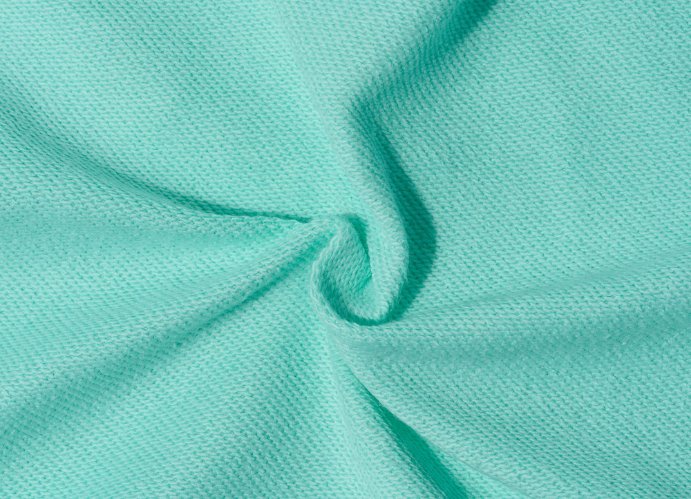The Ultimate Guide to Stretch Comfort: Understanding Cotton-Spandex for UK Shoppers
Cotton-spandex fabric brings together the best qualities of natural cotton and synthetic stretch fibres. This versatile blend typically contains 95% cotton and 5% spandex, creating a comfortable and flexible material that moves with your body while maintaining its shape.
The addition of spandex to cotton creates a fabric with superior shape retention and remarkable recovery properties. This means clothes keep their fit even after repeated wear and washing, making them ideal for everyday use.
Cotton-spandex blends offer the perfect balance between breathability and stretch, making them a popular choice for both casual wear and athletic clothing. The natural cotton fibres allow air circulation while the spandex provides flexibility for unrestricted movement.
On This Page
Key Takeaways
- Cotton-spandex fabric combines natural breathability with excellent stretch capabilities
- The blend retains its shape and fit even after multiple washes and extended wear
- This versatile material suits various garment types from activewear to everyday clothing
Composition and Properties

Cotton-spandex fabric combines natural cotton fibres with synthetic elastane to create a versatile textile with enhanced stretch and durability properties. The blend offers both comfort and flexibility whilst maintaining shape retention.
Material Composition
Cotton-spandex blends typically contain 95% cotton and 5% spandex. This ratio creates an optimal balance between natural and synthetic fibres.
Cotton provides the primary structure of the fabric, contributing softness and breathability. The natural fibres allow air circulation and moisture absorption.
Spandex, also known as elastane or Lycra, is a synthetic polymer that adds stretch capabilities. Its molecular structure consists of long-chain polymers that can extend and retract.
Elasticity and Stretch
The fabric offers four-way stretch capabilities, allowing movement in both length and width directions. This makes it ideal for form-fitting garments.
The elastic recovery rate is particularly strong, helping garments maintain their original shape after stretching. Clothes resist sagging and bagging even after repeated wear.
The stretch factor typically ranges from 20% to 30% of the original fabric dimensions, depending on the specific blend ratio.
Durability Factors
Cotton-spandex fabric demonstrates excellent shape retention and crease recovery properties. The synthetic component strengthens the natural cotton fibres.
The blend resists wear and tear better than pure cotton, particularly in high-stress areas of garments. Regular washing doesn’t significantly impact the fabric’s performance.
The material maintains its elasticity through multiple wash cycles when proper care instructions are followed. Cold water washing and gentle drying help preserve the spandex fibres.
UK Standards and Quality Benchmarks
Cotton-spandex blends sold in the UK must adhere to specific British and European textile standards. These regulations ensure consistent quality and performance across different manufacturers and brands.
British Textile Standards
Cotton-spandex fabrics in the UK market typically conform to BS EN ISO 20932 standards for elasticity testing. This certification ensures the material meets specific stretch and recovery benchmarks.
The British Retail Consortium (BRC) has established additional guidelines for textile quality, particularly for blended fabrics used in performance wear. These standards evaluate factors such as:
- Colour fastness
- Dimensional stability
- Pilling resistance
- Stretch performance under various conditions
UK manufacturers often display these certifications on product labelling to indicate compliance with national quality standards.
Comfort and Functionality
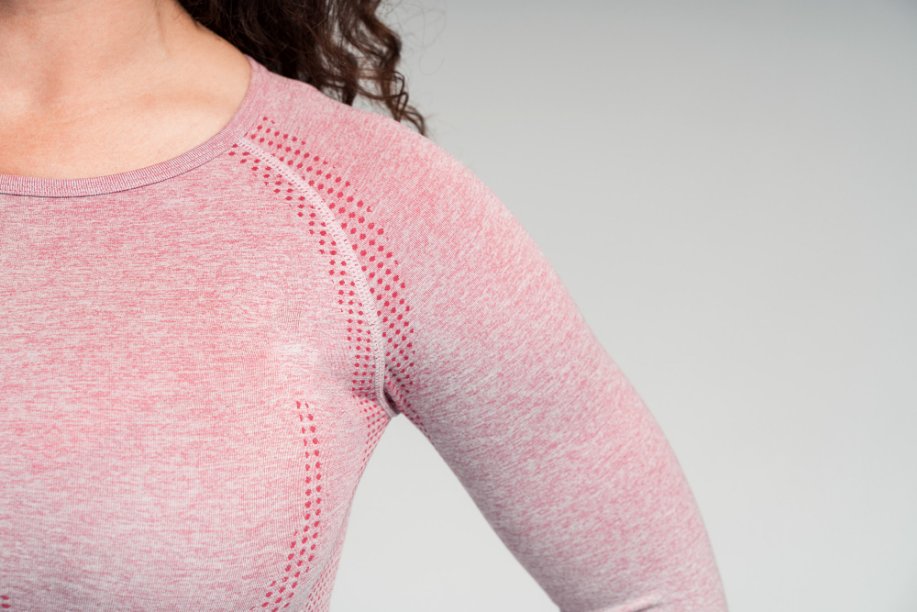
Cotton-spandex fabric combines natural fibres and stretchy materials to create garments that move with the body whilst maintaining comfort. The blend offers superior flexibility and natural temperature regulation.
Breathability and Moisture-Wicking
Cotton-spandex material allows air to flow freely through its fibres, helping regulate body temperature during physical activity. The cotton component absorbs moisture whilst the spandex helps maintain the fabric’s shape.
This blend creates small air pockets between fibres that enhance ventilation. These spaces allow heat to escape and fresh air to circulate.
The material draws sweat away from the skin and disperses it across the fabric’s surface. This process helps keep the wearer dry and comfortable during exercise or warm weather.
Heat Sensitivity and Care
The fabric requires gentle washing at moderate temperatures to maintain its elasticity. A temperature of 30°C is ideal for preserving the spandex fibres.
- Wash in cool or lukewarm water
- Avoid fabric softeners
- Air dry when possible
- Turn garments inside out before washing
Direct heat from tumble dryers can damage the spandex component. High temperatures may cause the elastic fibres to break down, reducing the fabric’s stretch capacity.
Regular gentle washing helps maintain the fabric’s comfort and flexibility without compromising its moisture-wicking properties.
UK Climate Considerations
Cotton-spandex fabrics are particularly well-suited to the UK’s variable climate. The blend’s temperature-regulating properties make it ideal for the country’s unpredictable weather patterns, where conditions can change rapidly throughout the day.
During typical British summers, the cotton component provides breathability without overheating, while in cooler months, the close fit allows for effective layering. This versatility makes cotton-spandex garments practical year-round essentials for UK consumers.
For outdoor activities in the UK’s frequently damp conditions, the quick-drying nature of cotton-spandex blends offers practical advantages over pure cotton, which tends to remain wet longer when exposed to rain or high humidity.
Applications in Clothing

Cotton-spandex fabric combines comfort with stretch, making it ideal for countless clothing applications. The blend’s versatility allows it to adapt to different garment types whilst maintaining shape and providing freedom of movement.
Activewear and Athletic Use
Cotton-spandex excels in athletic clothing due to its superior stretch and recovery properties. The fabric moves with the body during exercise without losing its shape.
Popular Athletic Applications:
- Running shorts and vests
- Yoga leggings and tops
- Gym wear
- Dance attire
The breathability of cotton combined with spandex’s flexibility creates workout clothes that keep athletes cool and comfortable. The fabric wicks away moisture whilst maintaining a secure fit during high-intensity activities.
Casual and Everyday Wear
Cotton-spandex blends create comfortable everyday clothing that maintains its shape throughout daily wear. The fabric’s natural stretch makes it perfect for fitted garments.
Common Casual Applications:
- Skinny jeans and jeggings
- Fitted t-shirts
- Stretchy skirts
- Form-fitting dresses
The fabric resists wrinkling and keeps its shape after washing. Its natural give allows for easy movement during daily activities whilst maintaining a polished appearance.
Undergarments and Intimates
The soft feel and excellent stretch make cotton-spandex ideal for undergarments. The fabric provides both comfort and support in intimate clothing.
Essential Intimate Wear:
- Sports bras
- Everyday bras
- Briefs and boxers
- Shapewear
The blend offers gentle compression without feeling restrictive. It maintains its elasticity through repeated washing and wearing, ensuring undergarments keep their shape and support level.
British Fashion Trends
In the UK market, cotton-spandex has become particularly prevalent in the “athleisure” category, with British consumers embracing comfortable yet stylish clothing for both exercise and casual settings. Leading UK high street retailers like Marks & Spencer, John Lewis, and Next have expanded their cotton-spandex offerings to meet this growing demand.
British designers have also embraced cotton-spandex blends for creating form-fitting silhouettes that accommodate the more variable body shapes of real consumers, moving away from the ultra-slim fits that dominated previous decades. This trend has been especially notable in the UK’s denim market, where cotton-spandex jeans have largely replaced traditional rigid denim.
UK Market and Availability
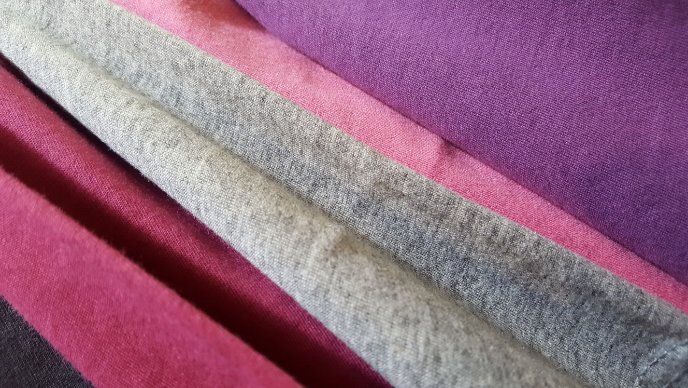
Cotton-spandex blends are widely available across the UK retail landscape, with options spanning various price points and quality levels to suit different consumer needs.
UK Retailers and Pricing
The UK market offers cotton-spandex fabrics at diverse price points, reflecting different quality grades and manufacturing standards:
High Street Options:
- Marks & Spencer: £8-15 per metre for quality cotton-spandex blends
- John Lewis: £10-20 per metre for premium cotton-spandex varieties
- Fabricland: £6-12 per metre for standard cotton-spandex fabrics
Specialist Suppliers:
- Fabric UK (London): £15-25 per metre for designer-quality blends
- Edinburgh Fabrics: £12-18 per metre for locally sourced options
- Textile Express (Manchester): £8-22 per metre for varied weight options
Many UK retailers offer seasonal discounts, particularly during traditional sale periods in January and July, making higher-quality cotton-spandex more accessible to home sewers and small businesses.
Regional Availability
The availability of cotton-spandex fabrics varies across UK regions:
- London’s Goldhawk Road and Soho areas host numerous fabric shops with extensive cotton-spandex selections
- Manchester’s textile district maintains its manufacturing heritage with specialized cotton-blend suppliers
- Online UK retailers like Minerva Crafts and Fabric Godmother offer nationwide delivery, serving consumers in areas with fewer physical fabric shops
Environmental Impact and Sustainability
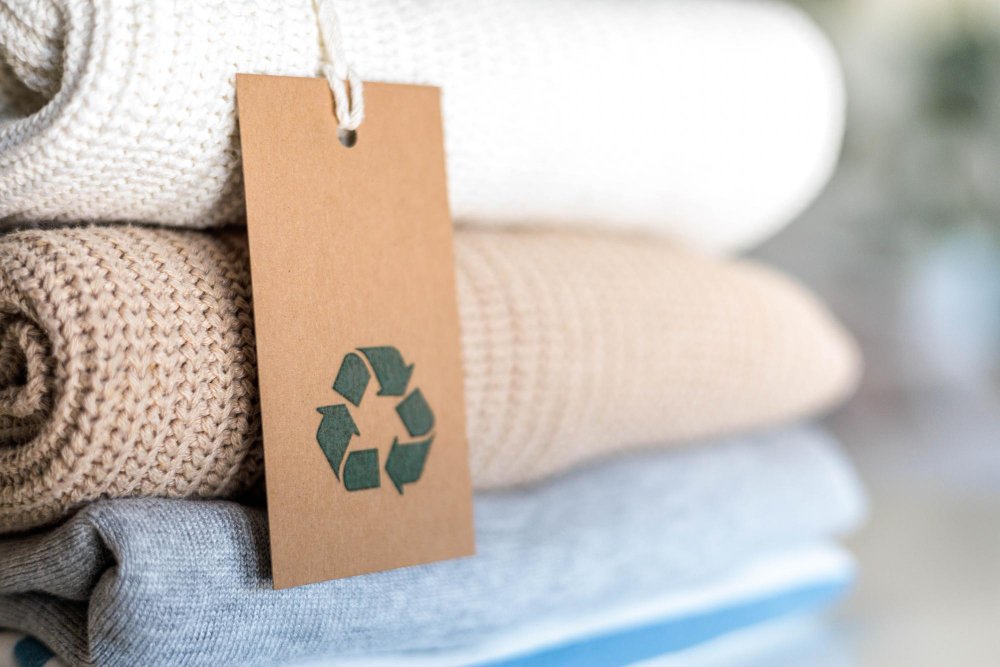
Cotton-spandex blends create significant environmental challenges across their lifecycle. The combination of natural and synthetic fibres presents unique sustainability hurdles in both production and disposal.
Organic Cotton Benefits
Mechanically recycled cotton ranks among the most sustainable fibre choices. Organic cotton eliminates harmful pesticides and requires less water than conventional cotton farming.
Growing organic cotton preserves soil health through natural farming methods. It supports biodiversity and reduces toxic chemical runoff into waterways.
Organic cotton breaks down naturally at the end of its life, unlike synthetic materials. This makes it more environmentally friendly when disposed of properly.
Synthetic Material Challenges
Spandex fabrics pose sustainability concerns due to their petroleum-based origins. The manufacturing process requires intensive energy use and creates harmful emissions.
The blend of cotton and spandex makes recycling particularly difficult. Most textile recycling facilities cannot effectively separate these mixed fibres.
These blended fabrics contribute to textile waste in landfills. The synthetic components can take hundreds of years to decompose, releasing microplastics into the environment.
Many manufacturers now seek alternatives that maintain stretch properties whilst improving environmental impact. New recycling technologies are being developed to address these challenges.
UK Sustainability Initiatives
The UK has implemented specific programmes addressing the environmental challenges of blended textiles. The Textile 2030 initiative, launched by WRAP (Waste and Resources Action Programme), aims to transform the UK’s textile industry through circular economy principles.
UK retailers like Marks & Spencer and John Lewis have joined the Sustainable Clothing Action Plan (SCAP), committing to reduce carbon, water, and waste footprints across their textile supply chains, including cotton-spandex products.
Several British textile manufacturers now offer cotton-spandex fabrics certified by the Soil Association, the UK’s leading organic certification body. These products must meet strict environmental and ethical standards throughout their production process.
Fabric Care and Maintenance
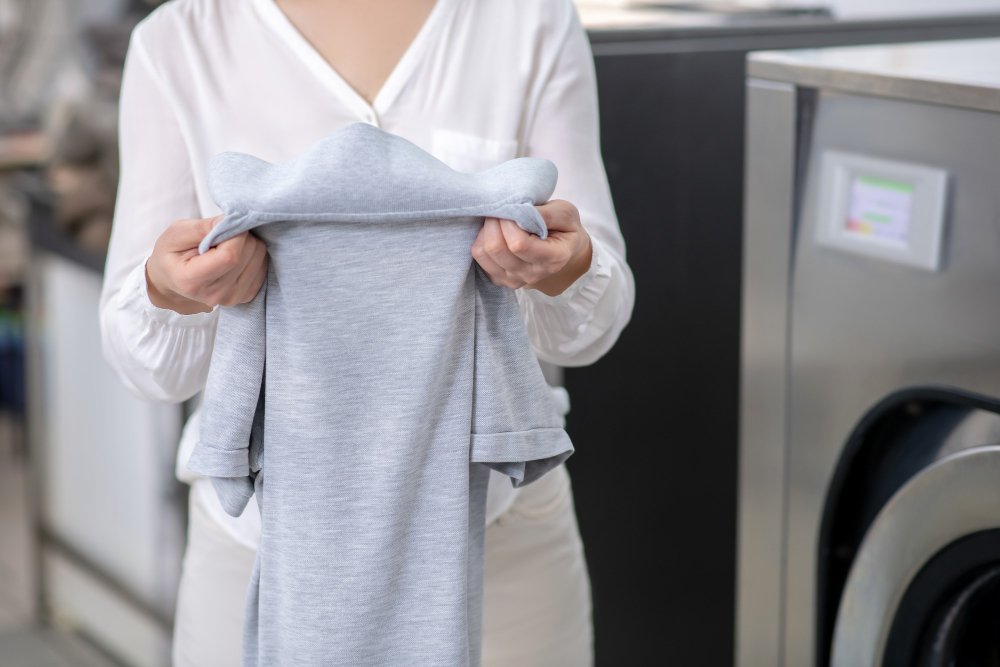
Taking proper care of cotton-spandex garments helps them maintain their shape, elasticity and colour. The right cleaning methods and storage practices make a significant difference in how long these clothes last.
Washing and Drying Guidelines
Cotton-spandex blends require gentle washing in cold water to prevent damage to the fibres. Use a mild detergent without bleach or harsh chemicals.
Add 1/2 cup of baking soda to the wash cycle to keep whites bright and remove stubborn odours.
Turn garments inside out before washing to protect the outer surface and reduce friction damage.
Select the gentle cycle on your washing machine. This reduces stress on the elastic fibres.
Drying Tips:
- Air dry when possible
- Use low heat settings if machine drying
- Remove promptly to prevent wrinkles
- Do not tumble dry on high heat
Maintaining Shape and Colour
These blended fabrics can stretch and lose their shape without proper care. Reshape garments while damp and lay flat to dry.
Store items folded rather than hanging to prevent stretching. Avoid leaving in direct sunlight which can fade colours.
Sort clothes by colour before washing. Dark items should be washed separately from lights to prevent colour bleeding.
Quick Care Tips:
- Wash before first wear
- Skip fabric softeners
- Iron on low heat if needed
- Store in cool, dry places
UK Water Considerations
The UK’s hard water regions, particularly in the East and South East of England, present special challenges for cotton-spandex care. Hard water can leave mineral deposits that stiffen fabrics and reduce elasticity over time.
To combat these effects, many UK consumers use water softeners or add a cup of white vinegar to the rinse cycle. This helps maintain the elasticity of the spandex component while preventing the chalky residue that can accumulate on fabrics washed in hard water.
UK consumers also benefit from following British Standard washing symbols on garment care labels, which often recommend specific temperature settings and washing methods calibrated for UK washing machines and water conditions.
Technical Aspects and Stretch Features

The technical properties of cotton-spandex blends create fabrics with exceptional elasticity and recovery capabilities. The synthetic fibres work together with cotton to produce materials that maintain their shape while offering excellent comfort.
Spandex and Elastane
Spandex, also known as elastane or Lycra™, is a synthetic fibre that provides remarkable stretch properties. The material can stretch up to 500% of its original length without breaking.
Most cotton-spandex blends contain between 2% and 10% spandex content. This small percentage is enough to create significant stretch while maintaining the cotton’s natural properties.
The molecular structure of spandex consists of long polymer chains that coil and uncoil like springs. This unique structure enables the fabric to return to its original shape after stretching.
Properties of Stretch Fabrics
Cotton-spandex fabrics offer excellent recovery, meaning they return to their original shape after being stretched. This prevents sagging and maintains garment fit throughout wear.
The blend provides key performance features:
- 4-way stretch capability
- Shape retention
- Wrinkle resistance
- Enhanced durability
The addition of spandex creates fabrics that move with the body whilst retaining the breathability of cotton. This makes them ideal for form-fitting garments and activewear.
These materials require special care during manufacturing. The stretch components need precise temperature control during dyeing and finishing to maintain their elastic properties.
UK Testing Standards
In the UK, cotton-spandex fabrics undergo rigorous testing to meet British and European standards. The BS EN ISO 20932-1:2020 standard specifically evaluates the elasticity of fabrics, measuring properties like:
- Maximum stretch without deformation
- Recovery rate after repeated stretching
- Dimensional stability after washing
- Performance under various environmental conditions
These standardized tests ensure cotton-spandex products sold in the UK market maintain consistent quality and performance across different brands and price points. British manufacturers typically conduct additional wear testing to evaluate how fabrics perform under real-world conditions like walking, running, and regular movement.
Health and Wellbeing Benefits

Cotton-spandex blends offer numerous health advantages that make them particularly beneficial for UK consumers across different demographics and activity levels.
Comfort for Sensitive Skin
Cotton-spandex fabrics are gentler on sensitive skin compared to fully synthetic materials. The natural cotton component allows the skin to breathe while reducing the likelihood of irritation and allergic reactions.
For UK sufferers of skin conditions like eczema and psoriasis, which affect approximately 15% of the British population, cotton-spandex offers a comfortable compromise between pure cotton and synthetic performance fabrics.
The reduced friction and gentle compression of cotton-spandex garments can also help prevent chafing during exercise, making them ideal for the growing number of UK adults participating in regular physical activity.
Benefits Across UK Demographics
For Children: Cotton-spandex school uniforms provide the flexibility needed for active play while maintaining a smart appearance throughout the school day (a particular concern for UK parents).
For Elderly Consumers: The ease of dressing and undressing cotton-spandex garments makes them practical for older individuals with reduced mobility, supporting independent living.
For Active Adults: The fabric’s combination of breathability and stretch makes it ideal for the variable UK climate, whether for outdoor walking in the Lake District or fitness classes in urban centres.
Fashion and Market Trends
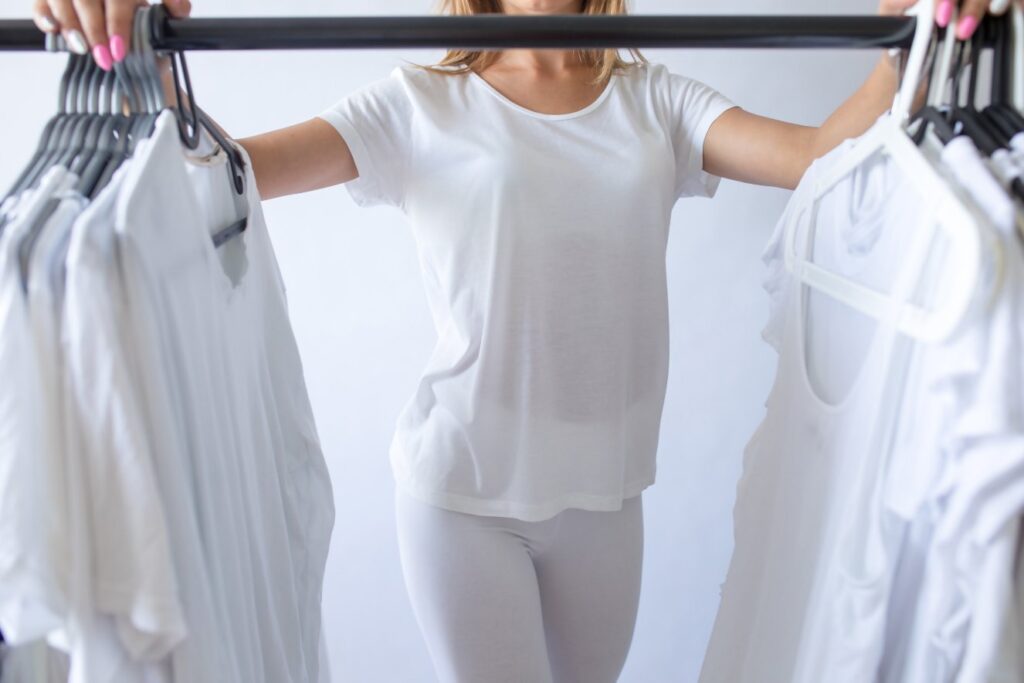
Cotton-spandex fabrics have transformed modern fashion by combining comfort with style. The blend has become essential in creating stretchy, form-fitting garments that meet current fashion demands.
Evolving Fashion Industry
Cotton-spandex blend fabrics have revolutionised high-end and casual fashion. Designers use this versatile textile to create stylish skinny jeans, fitted dresses, and athleisure wear.
The material’s adaptability makes it perfect for form-fitting silhouettes that highlight natural body shapes whilst maintaining comfort. Fashion houses incorporate the blend into swimsuits and activewear collections.
Top fashion applications:
- Body-conscious dresses
- Athletic clothing
- Fitted tops and bottoms
- Stretchy denim wear
Consumers’ Preference for Stretch
Modern shoppers prioritise comfort without sacrificing style. Cotton-spandex garments offer superior shape retention and durability, making them a practical choice for daily wear.
The blend’s popularity has grown as production methods become more efficient, making stretch clothing more affordable for mass markets.
Key consumer benefits:
- All-day comfort
- Easy movement
- Wrinkle resistance
- Shape retention
UK High Street and Designer Adoption
British retailers have enthusiastically embraced cotton-spandex fabrics, with major UK high street brands like Next, River Island, and Primark featuring extensive cotton-spandex collections.
UK designers such as Stella McCartney and Victoria Beckham have incorporated premium cotton-spandex blends into their collections, elevating the material’s status beyond purely functional applications to fashion-forward statement pieces.
The UK market has seen particular growth in the “smart casual” category, where cotton-spandex blends allow for sophisticated styling with the comfort previously associated only with leisurewear, a trend accelerated by changing work patterns and increased home working among British professionals.
Cotton-Spandex vs. Alternative Fabrics
When selecting materials for clothing, UK consumers often compare cotton-spandex with other popular fabric options based on comfort, durability, and performance.
Comparative Performance Analysis
| Feature | Cotton-Spandex (95/5%) | Cotton-Polyester (60/40%) | Pure Cotton | Pure Synthetic |
|---|---|---|---|---|
| Breathability | Excellent | Moderate | Excellent | Poor to Moderate |
| Stretch Recovery | Excellent | Poor to Moderate | Poor | Excellent |
| Moisture Wicking | Good | Moderate | Moderate | Excellent |
| Durability | Very Good | Excellent | Moderate | Excellent |
| Comfort Against Skin | Excellent | Good | Excellent | Fair to Good |
| Typical UK Price Range | £8-20/metre | £5-15/metre | £6-18/metre | £10-25/metre |
| Environmental Impact | Moderate | High | Low | Very High |
This comparison demonstrates that cotton-spandex blends offer a balanced compromise across multiple performance factors, particularly excelling in comfort and flexibility without significantly sacrificing breathability, qualities that make them well-suited to the UK’s variable climate and active lifestyles.
Conclusion
Cotton-spandex fabric represents an ideal balance between comfort, performance, and durability that makes it a standout choice for UK consumers. This versatile blend combines the breathability and natural feel of cotton with the flexibility and shape retention of spandex, creating a material that excels across multiple applications.
The UK market has embraced cotton-spandex for good reason, it performs exceptionally well in the country’s variable climate, offering temperature regulation and moisture management for year-round comfort. From activewear to everyday clothing and even professional attire, this blend adapts to the diverse needs of British consumers.
While cotton-spandex presents some environmental challenges, particularly regarding end-of-life recyclability, the UK’s growing focus on sustainable textile production offers promising solutions. Consumers can make environmentally conscious choices by selecting organic cotton blends and supporting brands committed to responsible manufacturing practices.
For optimal longevity, UK consumers should follow specific care guidelines that account for regional water hardness and typical washing conditions. Proper maintenance will ensure these garments retain their shape, elasticity, and appearance through numerous wear cycles, offering excellent value despite their slightly higher initial cost compared to pure cotton alternatives.
Key Recommendations for UK Consumers
- Choose quality over quantity: Invest in well-made cotton-spandex garments from reputable UK retailers that adhere to British textile standards.
- Consider the application: Select different cotton-spandex ratios based on intended use, higher spandex content (5-8%) for activewear and lower percentages (2-3%) for casual clothing.
- Prioritize proper care: Follow UK-specific care instructions to combat hard water issues and preserve fabric performance.
- Look for certifications: Seek out fabrics certified by UK organizations like the Soil Association for more sustainable options.
- Shop seasonally: Take advantage of traditional UK sale periods to purchase higher-quality cotton-spandex garments at reduced prices.
The enduring popularity of cotton-spandex fabric in the UK market speaks to its exceptional versatility and performance. As manufacturing techniques continue to evolve and sustainability practices improve, this remarkable blend will likely remain a cornerstone of British wardrobes for years to come, offering the perfect compromise between comfort, style, and functionality for the modern UK consumer.
Frequently Asked Questions
Cotton-spandex blends offer unique properties that affect comfort, durability, and performance. The combination of cotton’s natural fibres with spandex’s stretch creates versatile garments that suit many needs.
How does cotton-spandex compare to pure cotton in terms of comfort and fit?
Cotton-spandex blends provide better stretch and recovery than pure cotton alone. The added elasticity helps garments maintain their shape throughout wear.
The natural softness of cotton remains present while the spandex adds flexibility and prevents sagging.
Can garments made from cotton-spandex fabric be considered high quality?
Cotton-spandex garments offer excellent durability when properly constructed. The spandex component helps maintain the garment’s shape over time.
These blends resist wrinkling better than pure cotton and typically last longer with proper care.
What are the price considerations when purchasing cotton-spandex blend fabrics?
Cotton-spandex blends typically cost more than pure cotton fabrics due to the added spandex component. The higher price reflects the enhanced performance features.
The improved durability often justifies the additional cost through extended wear life.
In what applications is cotton-spandex fabric typically used?
Cotton-spandex blends excel in fitted garments and activewear. These fabrics work well in t-shirts, leggings, and athletic clothing.
The blend also suits casual wear like jeans and fitted tops where comfort and movement matter.
How does the elasticity of a 95% cotton and 5% spandex blend impact the garment’s wearability?
A 95% cotton and 5% spandex ratio provides ideal stretch without compromising cotton’s natural feel. This blend allows clothes to move with the body while maintaining shape.
The small percentage of spandex prevents excessive stretching whilst ensuring good recovery.
Is there a significant difference in breathability between cotton-spandex and polyester fabrics for summer attire?
Cotton-spandex maintains better breathability than polyester blends. The natural cotton fibres allow air circulation and moisture absorption.
The addition of spandex does not significantly impact the fabric’s breathability, making it suitable for warm weather wear.
Are cotton-spandex blends more expensive than other fabrics available in UK shops?
In UK retail establishments, cotton-spandex blends typically cost 15-30% more than pure cotton fabrics, depending on the quality and spandex percentage. However, when compared to premium performance synthetics, they often represent better value.
Most UK high street retailers price cotton-spandex t-shirts between £15-25, while pure cotton alternatives often range from £10-20. This price difference reflects the enhanced durability and comfort that the blend provides.

